In July 2015, researchers at James Cook University in Australia recently discovered a surprise about the black leopards of the Malaysian peninsula: underneath their monochrome coats, their spotting was visible under infrared light. The iconic leopard spotting pattern could help conservationists identify individual animals, a crucial first step in monitoring and saving the creatures from poaching and habitat loss (Read the full story on the hidden spots of the black leopard of the Malay peninsula)
Black Cat
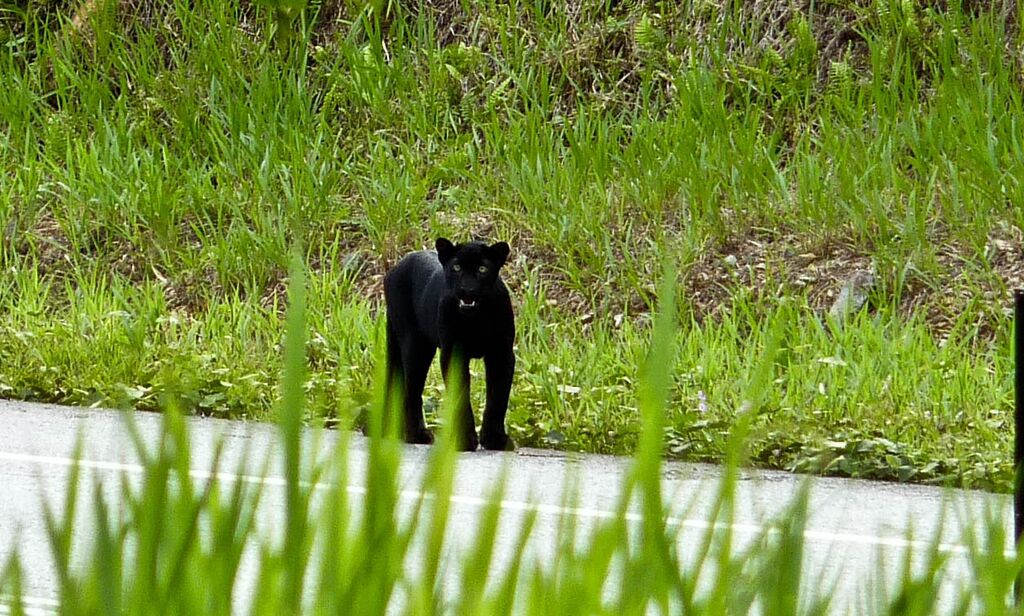
Leopards are the most widely distributed big cats in the world, cropping up everywhere from the frigid northern reaches of Russia to the Kalahari Desert in Africa. Most of these predatory cats sport the now-iconic pattern of spots that shows up in everything from swimsuits to coats. But most of the leopards of the Malaysian peninsula sport black, monochrome coats. Because they don't have a unique spotting pattern, conservationists had trouble telling them apart. (Photo Credit: Rimba)
Ubiquitous creatures
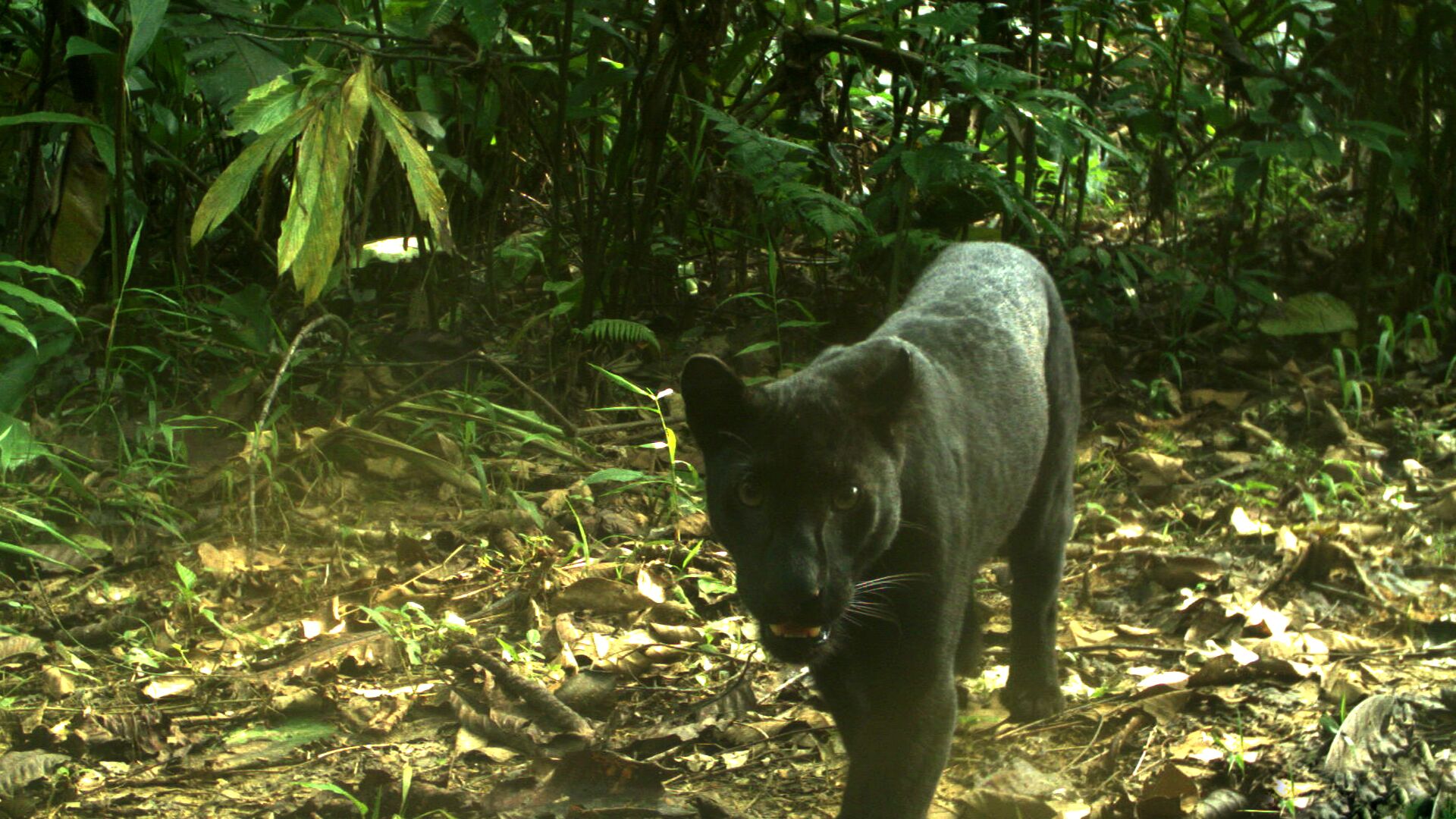
Some parts of the Malaysian peninsula have a rich supply of prey, but surprisingly few leopards. That fact, combined with sightings of dead leopards bearing injuries from wire snares, suggested that poachers were threatening the leopard population. However, the difficulty of identifying individual animals made monitoring and conservation efforts nearly impossible, researchers said. (Photo Credit: Gopalasamy Reuben Clements, Rimba)
Flashy surprise
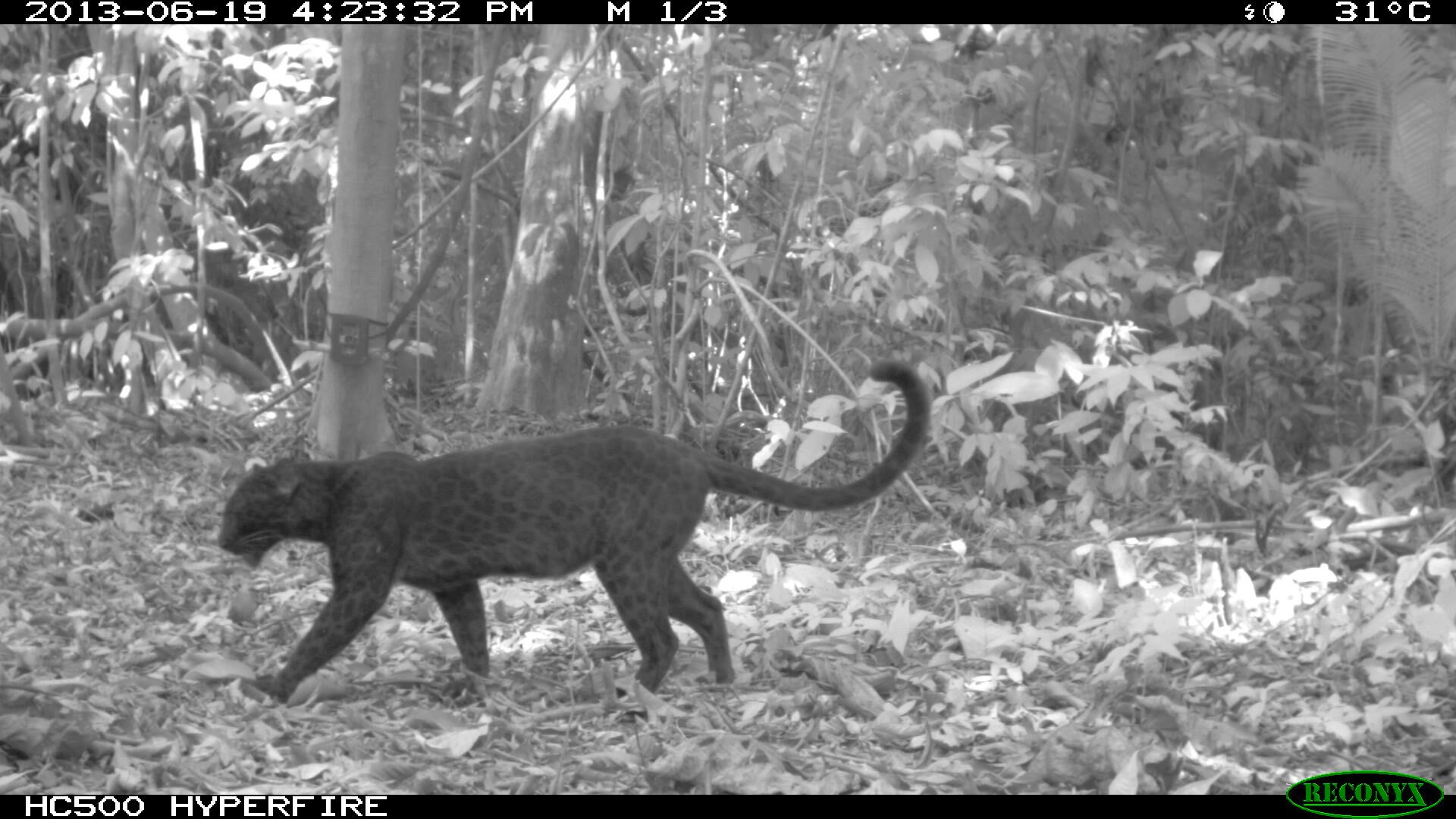
To aid their conservation efforts, scientists placed a number of cameras around the island to capture images of the elusive creatures. When they looked at the photos, they were surprised: The cameras use an infrared flash when it's dark at night, and those infrared photos showed the hidden spots lying beneath the leopards' dark coats. (Photo Credit: Rimba)
Sign up for the Live Science daily newsletter now
Get the world’s most fascinating discoveries delivered straight to your inbox.
Always night
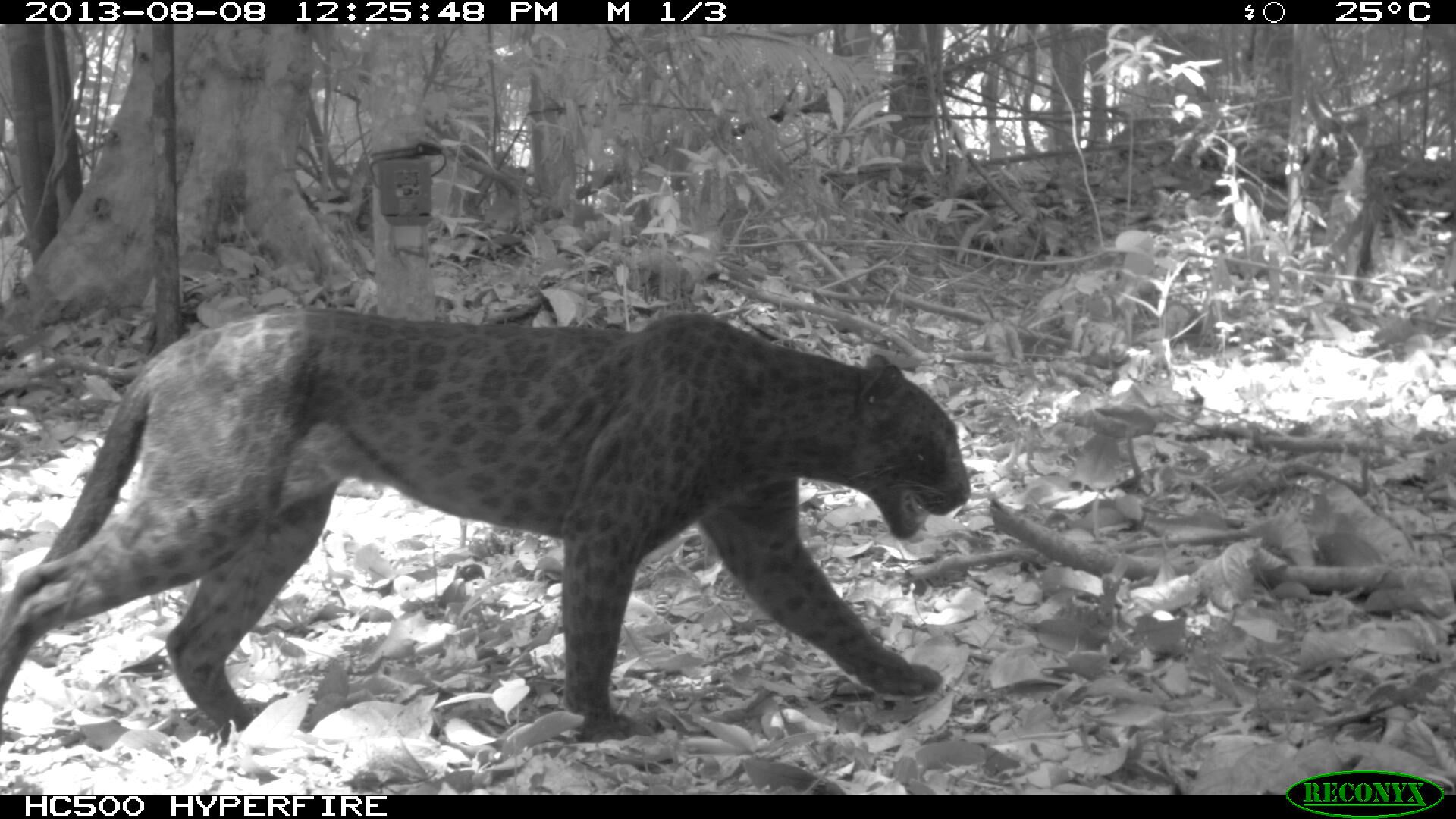
So the team rigged the cameras with their light sensors blocked, meaning the infrared flash was always activated as if it were nighttime. With their spots revealed, the researchers found that they could identify 94 percent of the leopards. (Photo Credit: Rimba)
Caught on camera
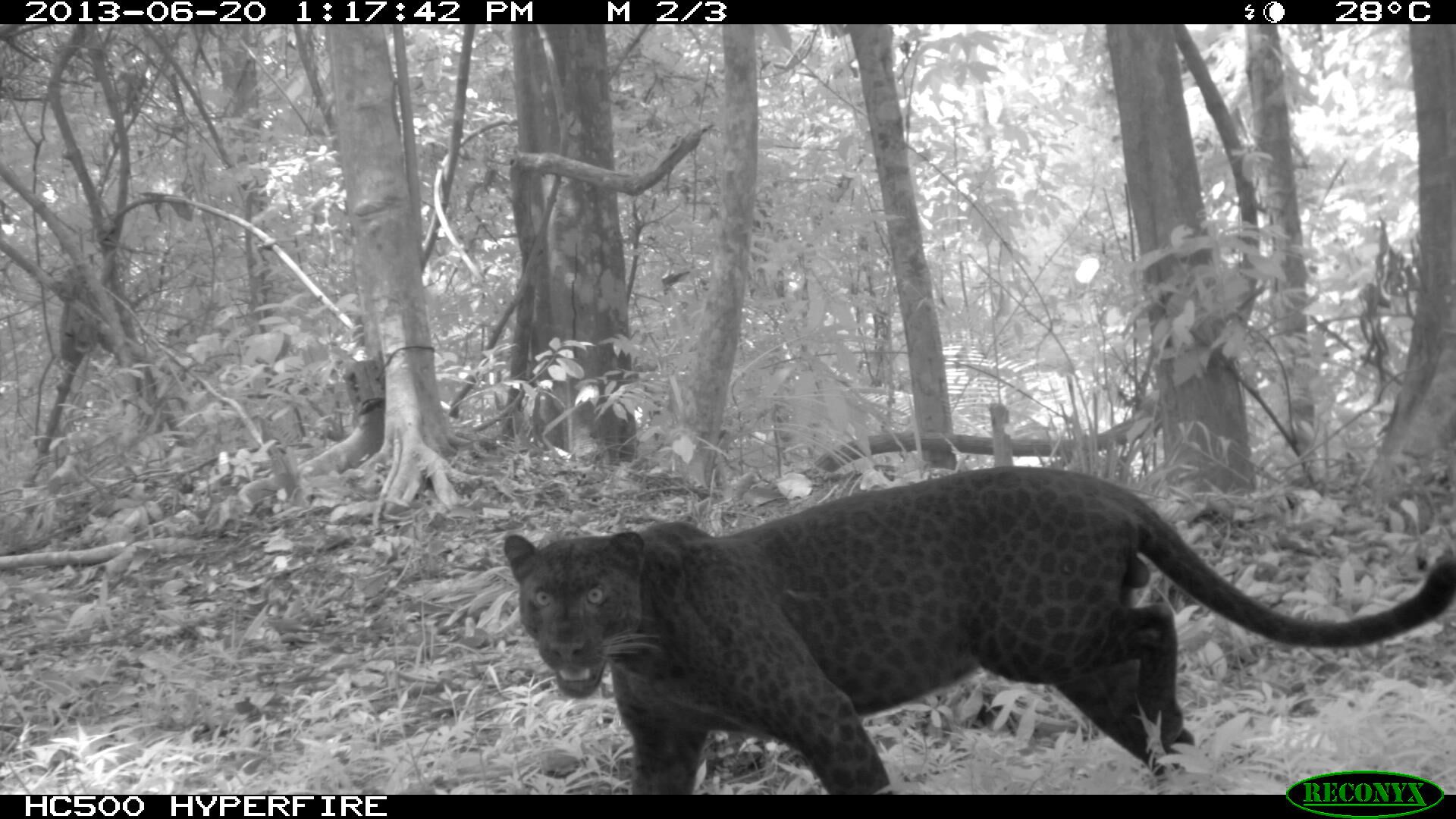
Here, a full-frontal view of one of the elusive black leopards of Malaysia. Though he may seem nondescript in daylight, under infrared light his spots are revealed. The new method of identifying leopards allowed the researchers to create their first estimate of the density of the leopard population on the Malaysian peninsula. (Photo Credit: Rimba)
Mystery color
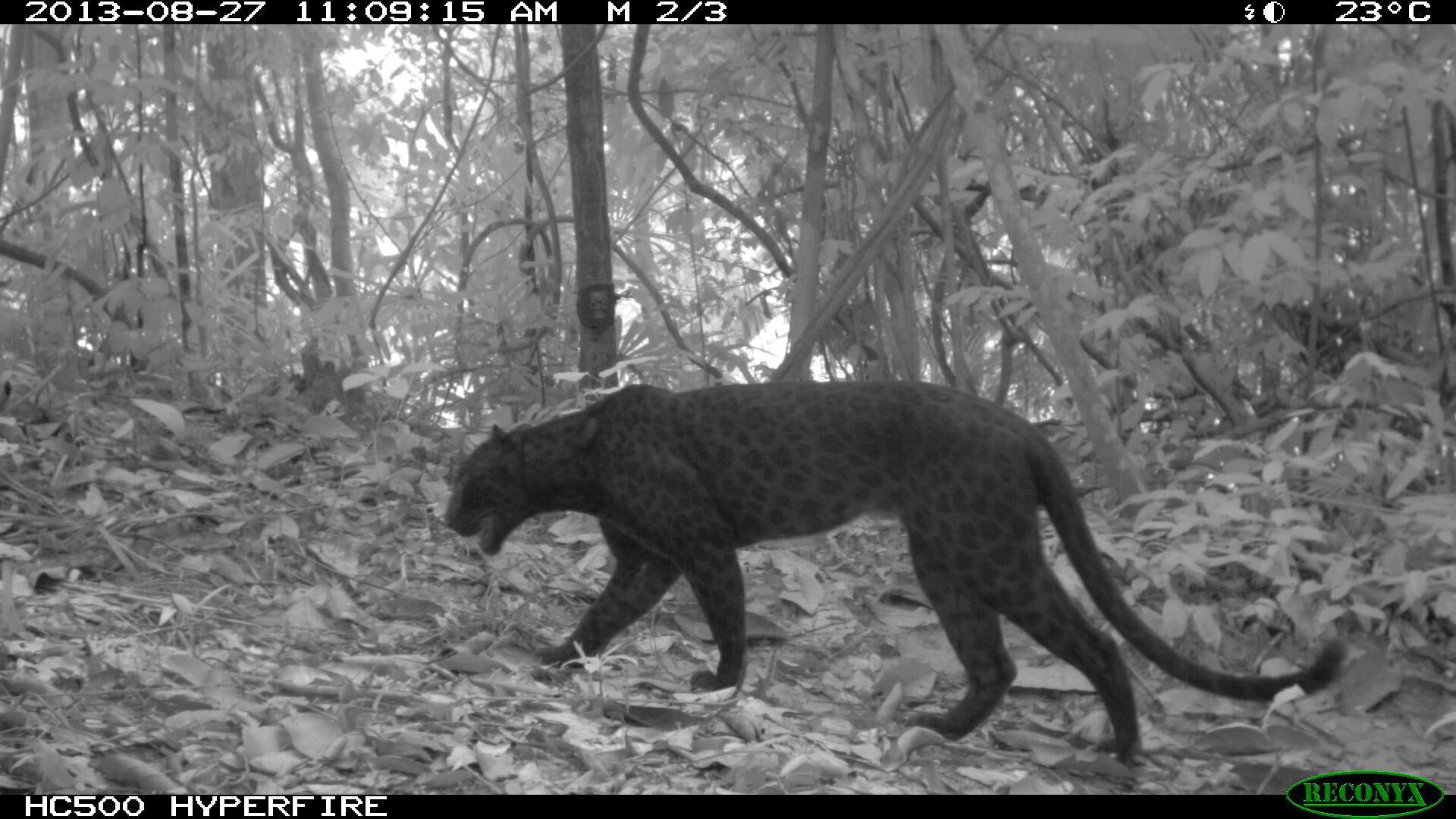
No one is sure exactly why the leopards in this region of Malaysia are black. The leopards competes with the Malayan tiger for prey, so perhaps the jet-black coat may provide a better form of camouflage in the peninsula's dense jungle habitat, helping it hunt better and outcompete its tiger counterpart. Alternatively, it may just be a random occurrence. There may have been a population crash around the time of the super eruption of Mount Toba 74,000 years ago, and the few leopards that remained may have, by chance, been black. (Photo credit: Rimba)
Follow Live Science @livescience, Facebook & Google+.

Tia is the managing editor and was previously a senior writer for Live Science. Her work has appeared in Scientific American, Wired.com and other outlets. She holds a master's degree in bioengineering from the University of Washington, a graduate certificate in science writing from UC Santa Cruz and a bachelor's degree in mechanical engineering from the University of Texas at Austin. Tia was part of a team at the Milwaukee Journal Sentinel that published the Empty Cradles series on preterm births, which won multiple awards, including the 2012 Casey Medal for Meritorious Journalism.









